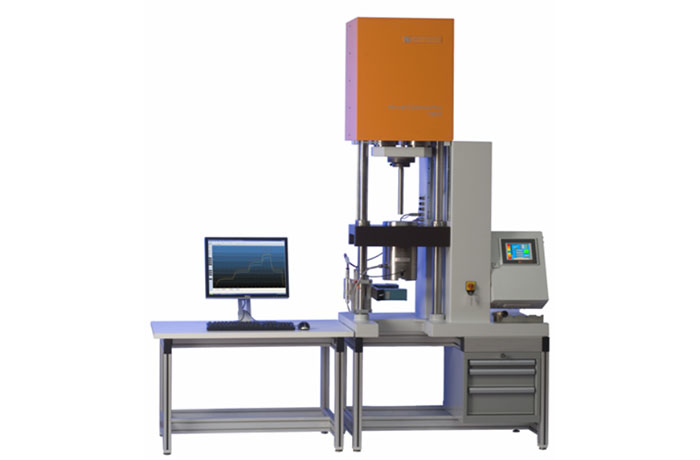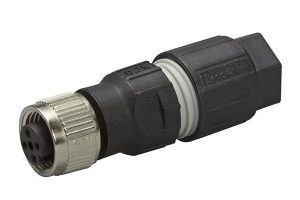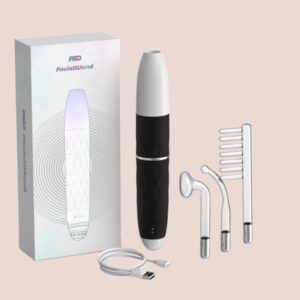
What are the Types of capillary rheometers?
A capillary rheometer is available in two types:
- Pressure type capillary rheometer.
- Gravity-type capillary rheometer.
The pressure-type capillary rheometer measures the relationship between shear stress and ate of the polymer melt in the capillary and can change the length-diameter ratio of the capillary under constant stress according to the diameter and appearance of the extrudate. Furthermore, it investigates the phenomena of elasticity and unstable flow of the melt, which helps predict the processing behaviour of polymers and the basis for selecting compound formulations.
How does a capillary rheometer work?
The temperature controllable cylindrical heating furnace is the primary part of the capillary rheometer. The sample is placed into the barrel, and the heating cavity is equipped with mould cores with different aspect ratios. A temperature and pressure sensor are carefully installed in the barrel to determine the sample temperature and capillary inlet pressure. The plunger rod is compressed to analyze the sample in a molten state and extruded through the capillary die core at different volumetric flow rates. The shear rate, stress, pressure and viscosity are calculated when the plunger rod’s real-time position, speed and melt pressure are recorded.
What is the difference Between Capillary Rheometer and Torque Rheometer?
- Composition of instrument:
The capillary rheometer consists of a single screw extrusion unit, a capillary die and an automatic weighing unit. In contrast, a torque rheometer comprises rack assembly, drive assembly, torque sensor, transmission assembly, mixing chamber assembly, feeding assembly, safety protection device, measurement and control system, etc.
- Principle:
A capillary rheometer determines the shear stress and rate under high-stress conditions. Additionally, it observes the appearance of the extrudate, studies the elasticity and instability of the melt by changing the aspect ratio and evaluates the polymer status changes, whereas the Torque rheometer adds the sample material into the mixing chamber. The sample is influenced by the rotors’ force having varying rotation speeds in opposite directions. Mixing is done continuously and sheared between the rotor and chamber wall. The torque rheometer will measure the reaction force using the torque sensor, process it with the help of computer software and obtain a rheological map of the torque.
- Measured data and functions:
As discussed previously, the primary function of a capillary rheometer is to measure the association between shear stress and the shear rate of polymer melts in capillaries and other related functions. Apparent and actual viscosity curve tests and extrusion swell behaviour measurements can also be done. In contrast, a torque rheometer is employed to determine the rheological properties of materials with accuracy and reliability by observing the reaction torque generated by the material to the rotor during the mixing process and the change in temperature with time.
Applications of Capillary Rheometers
The polycapillary rheometer is mainly utilized in polymer material research and development. It gives scientific data for creating polymer material production processes.
- Guide the production process:
Two factors are the point of focus during the production and processing of polymer materials:
- Temperature.
- Shear rate.
Determination of flow curves at various temperatures is done under the influence of a fixed shear rate. The sensitivity of the material is also determined with the help of the change curve of the viscosity with temperature. Steep slopes indicate sensitivity to the temperature, whereas a flat curve exhibits no sensitivity.
The temperatures suitable for good flow properties of the melt and processing/production can be found with the help of the curve. Controlling a correct temperature is critical for materials whose flow curves are extremely temperature-sensitive, such as nylon. For those with no sensitivity, a temperature change minimizes the quality of the product.
The relationship between the viscosity of the polymer material and the shear rate can be achieved by measuring the relationship between the flow curve and shear rate, provided that the temperature is constant. The characteristic ability of a Newtonian fluid is unchanged viscosity. If the viscosity decreases with an increasing share rate, then it is termed pseudoplastic fluid.
An ideal shear rate for the production process can be determined with the help of the flow curve.
During production, the shear rate of the polymer melt is generally changed by changing the number of revolutions of the motor.
2) Provide the scientific basis for the development of new materials:
The development of new material is based on studying new formulas and ratios or by the addition of oxidants and additives to polymer materials. The capillary rheometer can be used for an in-depth study of the ratio of different material components and the flow curve data of the composition to test the formula’s performance. Suppose the results are not up to the requirements. Adjustments in the ratio of additives can be made. The flow curves before and after the change are compared to see how the new additives or proportions affect the material’s fluidity.
Same materials can also exhibit different curves. Similarly, sometimes viscosity changes with a rapid shear rate and other times with a relatively gentle shear rate. The primary reason behind this is polymer materials’ different molecular weight distribution. Rotational rheometers and gel chromatography are the most common tools used to determine the molecular weight distribution of polymer compounds.. Steep viscosity change with shear rates indicates a broad molecular weight distribution range, whereas smooth viscosity change with shear rate represents a narrow molecular weight distribution range.
3. Solve product quality disputes:
Only the melt index of the product is provided by the manufacturers for the raw material. The same raw material is used for all the batches produced, but certain batches of the finished product are marked as qualified and some as unqualified. The user can use the results to complain to the manufacturer about the raw material, and the manufacturer can utilize the rheological data obtained through the polymer capillary rheometer to guide the resolution of user complaints.
Melt index alone is not enough. Rheological data is considered the foundation for formulating a process. Quantity issues can be tackled by adjusting the shear rate and temperature.
Unusual rheological data was given by the polymer capillary rheometer. Try to prove that the batch has quality problems. If the problem is with viscosity value, the fillers might be responsible for it. If the viscosity value varies rapidly, then it’s because due to the average molecular weight and distribution difference.
The polymer capillary rheometer can also choose the processing conditions of materials and optimize the processing formula.
FAQ:
Why should the inlet calibration be performed when the capillary rheometer is used to test the viscosity of polymer materials?
The derivation assumes the length of the capillary as infinite. Once the fluid flows through the inlet, the velocity increase as it passes from the largemouth to the small mouth. The streamline converges, and the material is squeezed from the barrel through the inlet. As the capillary fuses, the frictional energy dissipation of viscosity between layers with different flow rates is caused. Likewise, as the fluid flows from the large port to the small, a velocity gradient is produced, which results in elastic deformation and energy consumption. These energy losses result in a pressure drop at the inlet so as to not reflect the true pressure drop. No inlet effects mean the actual shear stress on the long tube is small than that with the inlet effect. Therefore, the pressure drop caused by it should be deducted.
Can a capillary rheometer do melt flow properties?
A capillary rheometer and melt flow rate tester are different from one another. The former is a slightly more advanced version of the latte. The difference is that the melt flow rate tester can only test the fluidity of the material under a fixed load and specific temperature, whereas the capillary rheometer can determine the melt rheology under different shear rates and different loads. As a result, the capillary rheometer can identify the moulding process parameters by studying temperature, pressure, and rate throughout the process.
How does the capillary rheometer aspect ratio affect the experiment?
The test process adopted by a capillary rheometer is similar to extrusion, injection, moulding and other moulding processes. The more significant aspect ratio is conducive to mixing and plasticizing of materials which can increase the melt pressure and decrease the loss of countercurrent leakage.
What are the influencing factors of capillary rheometer in mapping polymer melt flow curve?
Internal factors: Molecular weight, molecular weight distribution and molecular structure are generally the parameters affecting internal factors. Molecular weight and viscosity have a direct relationship; high viscosity equates to high molecular weight. Similarly, narrow molecular weight distribution represents higher viscosity. The molecular chain’s shape, the branch chain’s length, and the side group’s polarity are all affected by molecular weight structure, which should be considered in connection with specific polymers.
External factors: Viscosity is mainly affected by temperature and mechanical processing methods. Molecular chain entanglement theory is employed. The energy required for polymer motion at room temperature is sufficient for the disentanglement effect to outnumber the entanglement effect, lowering the viscosity.




